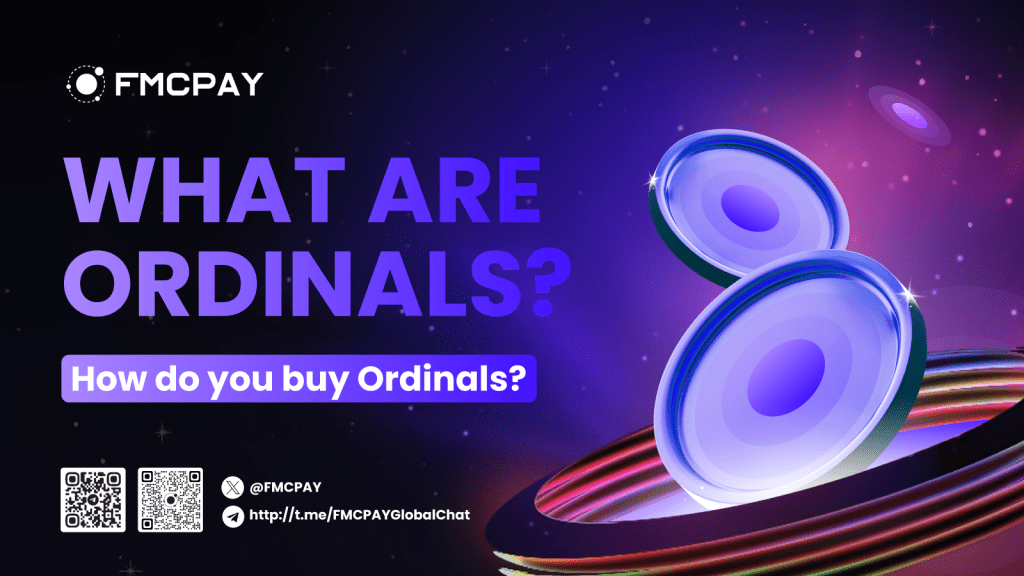The BTC community on Twitter is excited about the recent surge in Bitcoin’s value, hitting a new all-time high at $44k. This upward trend is impacting the entire Bitcoin ecosystem, highlighting key elements such as Ordinals, inscriptions, and the BRC-20 protocol. In this article, FMCPAY will gather and explore important aspects related to Ordinals.
👉 Readmore: What is BRC-20? Guide to Trading BRC-20 Tokens
What are Ordinals?
Bitcoin Ordinals represents the latest breakthrough in the Bitcoin ecosystem, empowering individuals to record diverse data types onto the Bitcoin blockchain. This innovation has sparked the emergence of a new market for Bitcoin NFTs within the blockchain.
At its core, Ordinals can be understood as data numbers linked to satoshis, the smallest unit of Bitcoin, where 100 million sats constitute 1 Bitcoin. The Ordinals protocol establishes sequence numbers for each satoshi, delineating their order of transfer from transaction inputs to transaction outputs in a first-in-first-out fashion. This systematic numbering enables the tracking and transfer of individual satoshis.
The unique capability to record data on individual satoshis distinguishes Ordinals, facilitating the creation of exclusive digital assets. These assets can undergo verification similar to NFT terms directly on the Bitcoin blockchain, all without necessitating any changes to the existing protocol.
What is Ordinal Theory?
In adherence to Ordinal Theory, each satoshi undergoes sequential numbering, commencing from 0. This systematic numbering system offers users a convenient means to track satoshis from their point of mining throughout the entirety of transaction history.
As implied by its name, Ordinal Theory is a conceptual framework. This signifies that satoshis are not genuinely serialized at the protocol level and do not leave any trace on the blockchain. To address this, Rodarmor has proposed a strategy involving the provision of sat series numbers, akin to NFTs, to bestow Bitcoin with stable identification numbers. These numbers can be effectively employed by various Bitcoin applications, including Bitcoin NFTs. This is the juncture where inscriptions play a pivotal role.

What Are Ordinal Inscriptions?
Inscriptions constitute a vital component of the Ordinals protocol, akin to NFT UIDs on Ethereum. These inscriptions are digital artifacts that find their origin on the Bitcoin blockchain through the process of inscribing sats with data content.
The content that can be included in these inscriptions spans text, images, or videos. Presently, images and text are the predominant content types being inscribed onto sats, exemplified by BRC-20 or Ordinals NFTs.
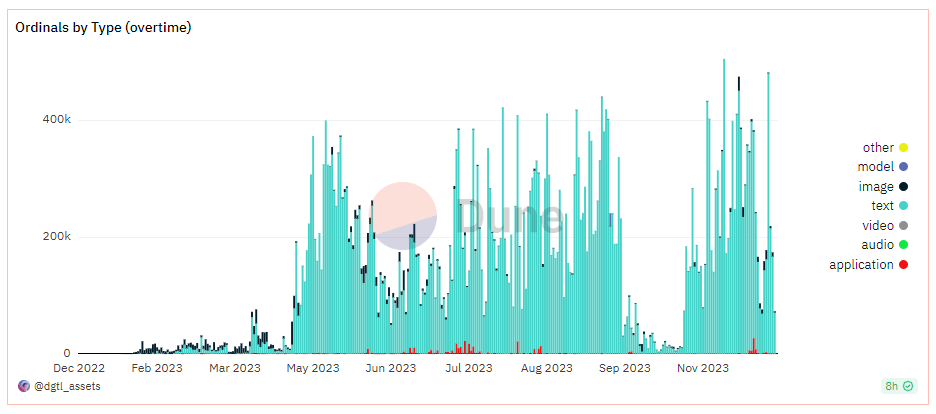
Differences between Ordinals and ERC-721 NFTs
In contrast to Ethereum’s ERC-721 NFTs, Ordinals transcend the role of a mere identifier pinpointing the location of digital content or a unique certificate. Instead, they seamlessly integrate into the smallest transferable data unit on the blockchain. Once mined, inscriptions are etched onto the initial satoshi of the inaugural transaction output, effectively and permanently distinguishing this specific recorded satoshi from its counterparts.
Utilizing unspent transaction outputs (UTXO) as their transaction output, inscriptions introduce a novel dimension to the blockchain. The implementation of Ordinals is anticipated to intensify the demand for outputs, thereby broadening the UTXO set.
Inscriptions boast versatility, allowing them to be transferred to regular Bitcoin addresses and take advantage of diverse Bitcoin infrastructures, including multisignature capabilities. Furthermore, the perceived value of each satoshi undergoes transformation through inscriptions, rendering them rare. Notably, historical events within Bitcoin, such as halving, stored on any satoshi, have the potential to imbue rarity to the recorded satoshi.
What Are Rare Sats?
The most esteemed satoshis fall under the categorization of ‘rare’ and ‘uncommon’ on the rarity scale within ordinal inscriptions. Renowned for their scarcity, these rare satoshis have evolved into sought-after collectibles, often fetching prices higher than those of ordinary satoshis. The Bitcoin blockchain systematically organizes these statistics based on their creation during pivotal periodic events in the Bitcoin network, including the inception of new blocks, difficulty adjustments, halving occurrences, and overall cycles.
Rare satoshis specifically refer to those initially mined during the phase of difficulty adjustment, a process unfolding roughly two weeks after the mining of 2016 blocks on the Bitcoin blockchain. Noteworthy examples of rare satoshis include blocks containing significant transactions from the Silk Road era, blocks featuring triple Txid, four-of-a-kind, straight, symmetrical end, divisible by 2:3:4, and others.
In the Bitcoin ecosystem, a total supply of 3,437 rare satoshis exists. The determination of satoshi rarity is achieved through an examination of the sat degree symbol, as demonstrated below.
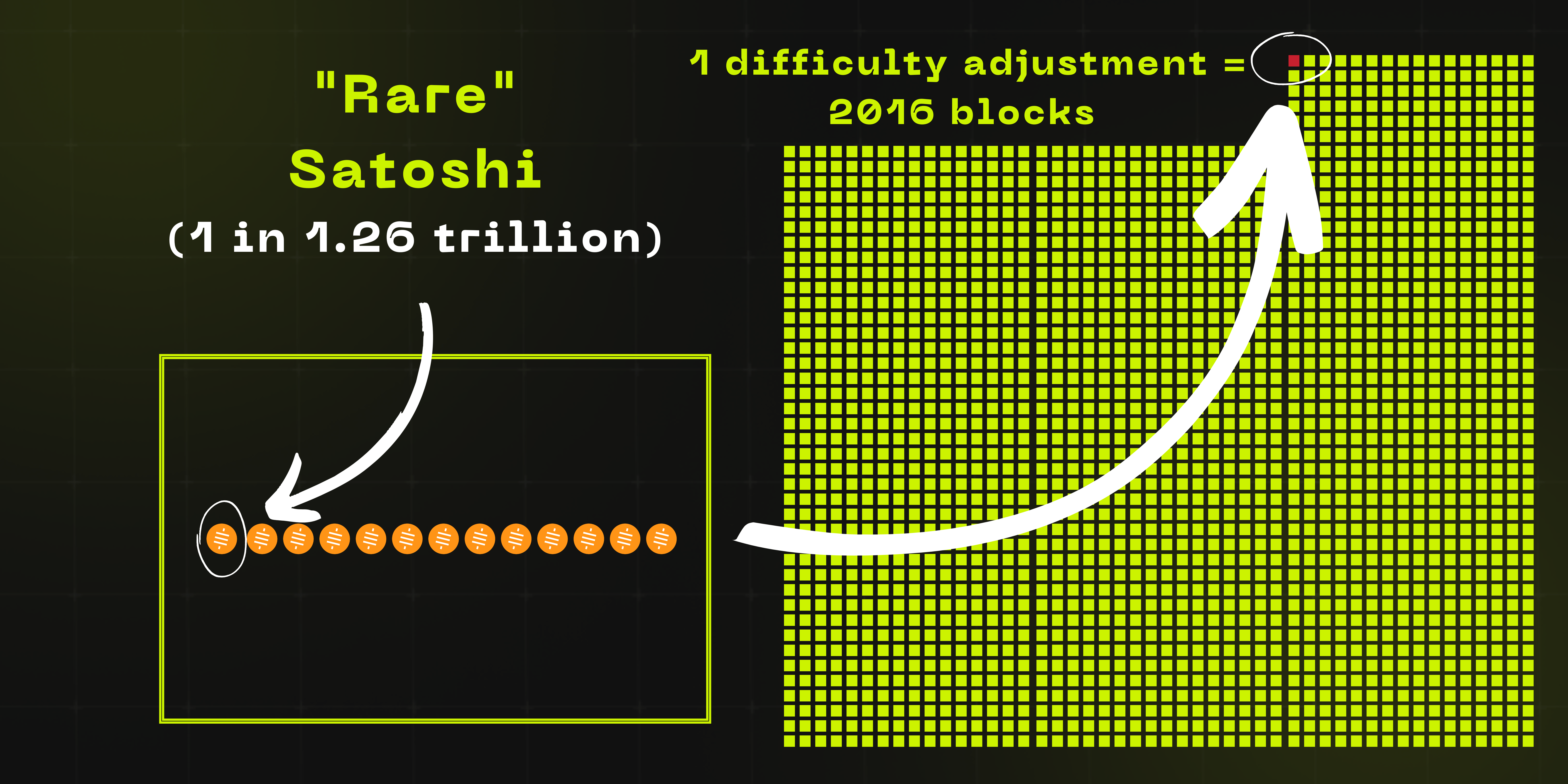
Classifying Ordinal Inscriptions
What are .Sats Names?
.Sat Names represent a novel standard within the Bitcoin network, akin to domains on other blockchains like ENS, ID, or the lens protocol. This standard allows individuals to devise names that are readable by humans through inscriptions. Names formulated under the .sats standard are appended with .sat at the end. For instance, names might manifest as xverse.sat, ken.sat, elizabeth.sat, and so forth.
The .sats standard adheres to three core principles:
- All .sats name statuses are generated and logged on the Bitcoin blockchain. This implies that no supplementary databases or services beyond the blockchain are necessary for name creation, and any Bitcoin node can successfully generate .sats names.
- The standard is designed to maintain neutrality, ensuring that no individual or user possesses privileges or access to create .sat names. The individual who first registers a .sats name becomes the owner of that name and holds the right to update it.
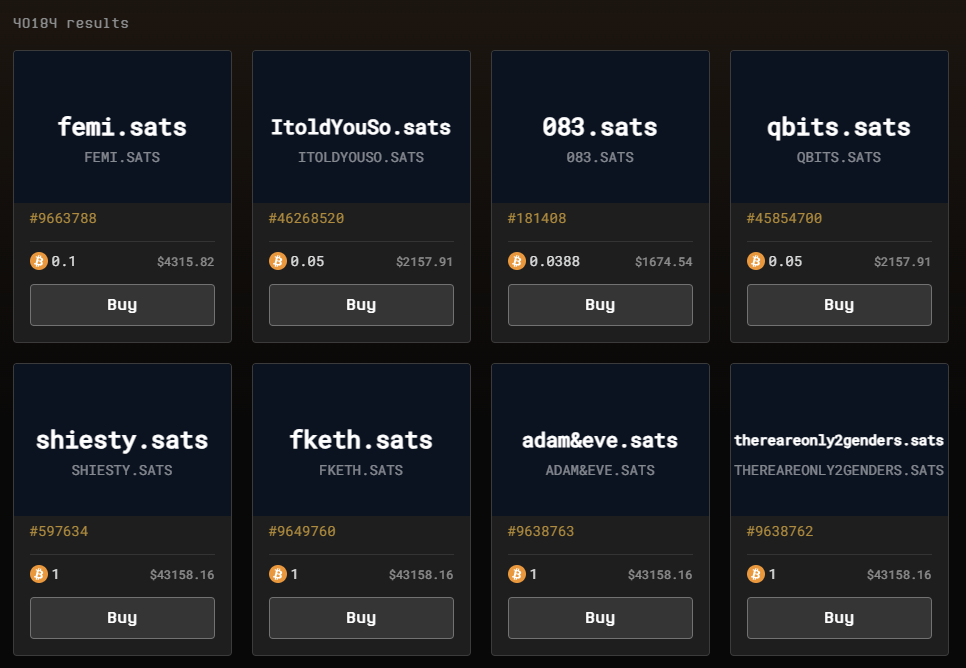
What Are Recursive Inscriptions?
Recursive inscriptions denote an algorithm for transferring data from existing inscriptions to a new inscription by stringing together data strings. Instead of recording a substantial amount of data on satoshis, which consumes significant memory and raises transaction costs, the recorder can leverage previously stored data and only needs to append new data. This approach proves beneficial in overcoming the existing 4 MB limit on each inscription.
For example, a creator of Bitcoin NFTs can efficiently produce thousands of general art pieces for a collection using Recursive inscriptions, as opposed to recording each NFT with the required features. NFTs within the collection, generated through recursive inscriptions, only necessitate automatic requests for data about unique features of the art from other engravings on the network. This strategy conserves space utilized by each NFT on the blockchain and reduces transaction fees associated with creating individual NFTs in the collection.
What Are Cursed Ordinal Inscriptions?
Cursed Ordinal Inscriptions are deemed invalid or unrecognized by the Ord protocol, indicating that they are generated using incorrect code for various operations on the Bitcoin blockchain.
Upon being labeled as ‘cursed,’ an inscription undergoes automatic assignment of a negative Inscriptions number. In contrast, valid Ordinal Inscriptions typically receive positive Inscriptions numbers. Users can inadvertently create cursed inscriptions on Bitcoin through several means, such as incorporating multiple inscriptions within a single transaction, utilizing inscriptions with titles that are not recognized, or applying inscriptions on the same sat, among other methods.
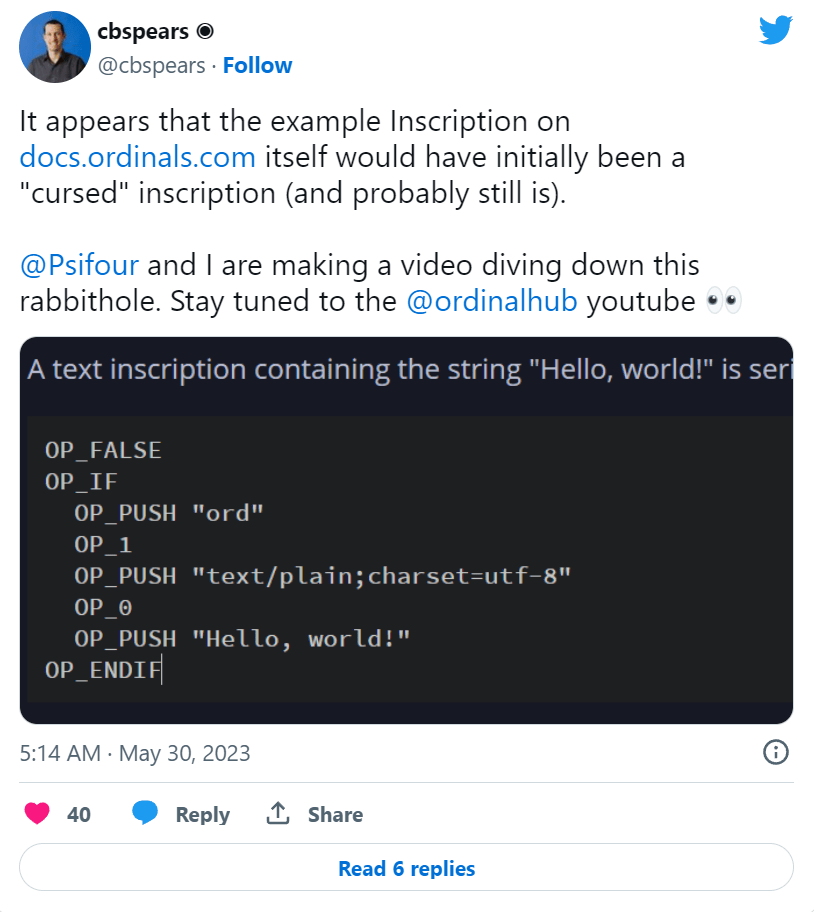
Top Bitcoin Ordinals NFT Collections
Ordinal Punks
Ordinal Punks constitutes a collection of 100 profile picture NFTs that were minted in the initial 650 inscriptions. This collection serves as a homage to the renowned CryptoPunks NFTs. According to the sales data of the project, the average price of these NFTs reached $71,860 shortly after their launch on February 23, 2023.
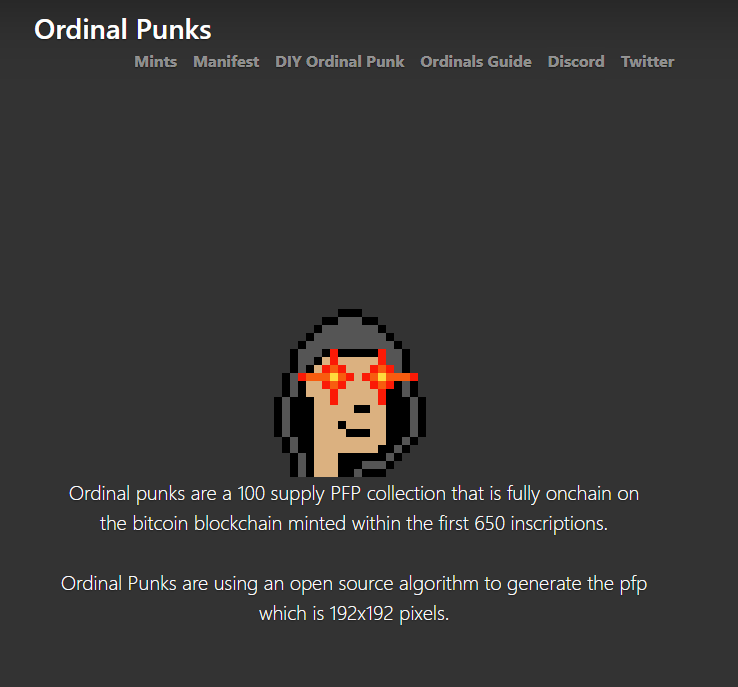
Taproot Wizards
Taproot Wizards is a compilation of 2,099 JPEG NFTs, designed with the concept of “reigniting the spark that made Bitcoin magical.” The underlying idea behind this project is to revive the enchantment associated with Bitcoin that was widely felt in its early days but has seemingly been forgotten by many. Udi Wertheimer, the developer, is the creative mind behind this distinctive Ordinals NFT collection.
Notably, the inaugural Taproot Wizard in this collection achieved a historic milestone by being recorded in the largest Bitcoin block ever. The JPEG associated with this NFT nearly occupied an entire 4 MB block, adding a unique dimension to its significance within the blockchain.
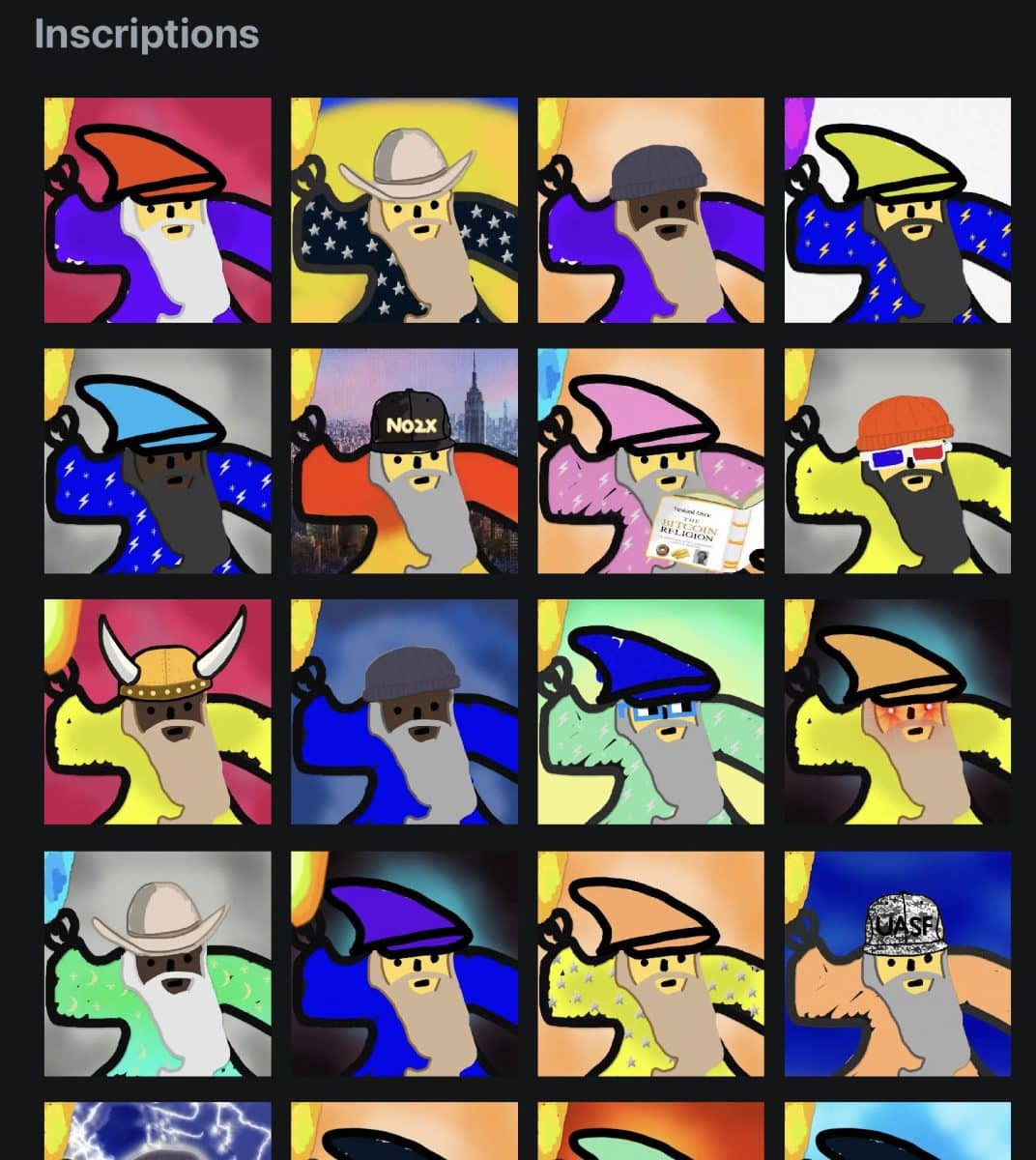
Bitmap
Bitmap serves as a consensus standard that enables individuals to stake a claim on digital ‘real estate’ within the Bitcoin block. This is made possible through Bitmap ordinal inscriptions, where individuals have the opportunity to be the first to inscribe “blocknumber.bitmap” onto a Satoshi.
By undertaking this action, they effectively transform that particular Bitcoin block into a component of the evolving Metaverse. This procedure is characterized by its fairness and decentralization, effectively converting the Bitcoin block into virtual property. The inception of this concept is credited to @blockamoto.

Bitcoin Frog
Bitcoin Frogs, introduced to the public in late February on the Bitcoin Ordinals platform, has exhibited a remarkable trading volume exceeding $32.2 million as of the current writing, as reported by CryptoSlam. The collection distinguishes itself as “10,000 unique frog collections cast directly on the Bitcoin Blockchain.”

How to Buy Ordinals?
To acquire Ordinals, start by setting up a Bitcoin wallet compatible with the Ordinals protocol, such as Xverse, Unisat,… and fund it with BTC. Explore an Ordinals marketplace to locate and purchase Ordinals, covering the inscription and network fees using BTC from your Xverse wallet.
For selling, list your Ordinal inscription on a marketplace with a designated price. Once a buyer agrees to the price, they make the payment using BTC, which is then directly sent to your Xverse wallet (minus the platform’s commission and Bitcoin network fees). Upon receiving the payment, the Ordinal will be transferred to the buyer as the marketplace dispatches the specific satoshi it is inscribed on to the collector.
Conclusion
Bitcoin Ordinals are securely recorded on the Bitcoin blockchain, guaranteeing their integrity and resistance to alteration. Given that Bitcoin stands out as the most decentralized blockchain network and Ordinals are directly inscribed on the chain, it can be argued that Ordinal inscriptions represent one of the most secure forms of NFTs in the market.
Nevertheless, this market is still in its infancy, and fundamentally, ordinals present a highly promising protocol. The assessment of whether Bitcoin Ordinals constitute a sound investment will differ for each investor and project. It’s important to note that this article does not provide investment advice, and individuals are encouraged to conduct their own research before making any investment decisions.
FMCPAY RESEARCH (VINCΞ)

